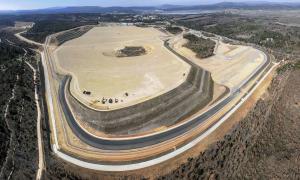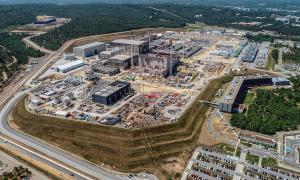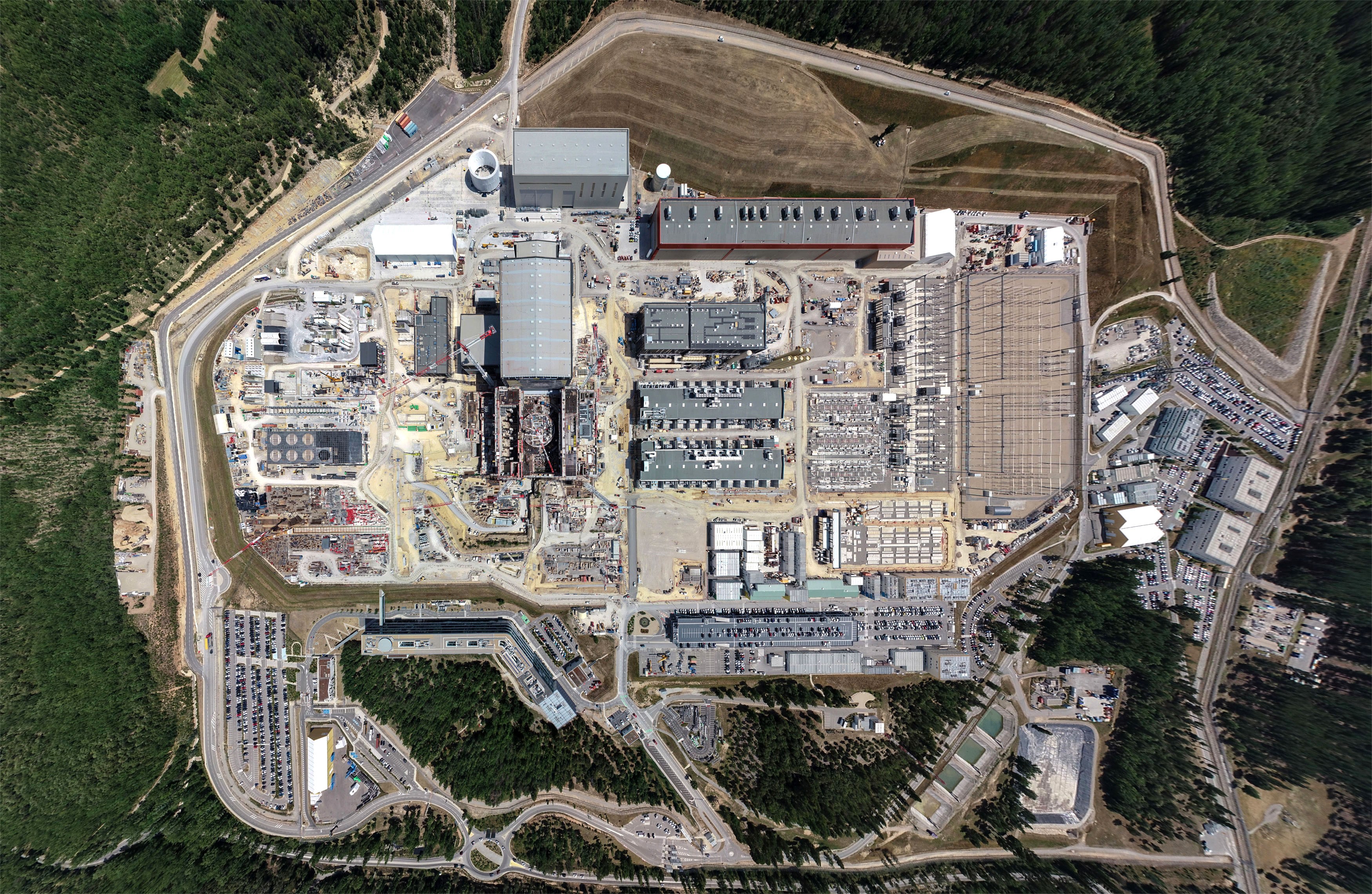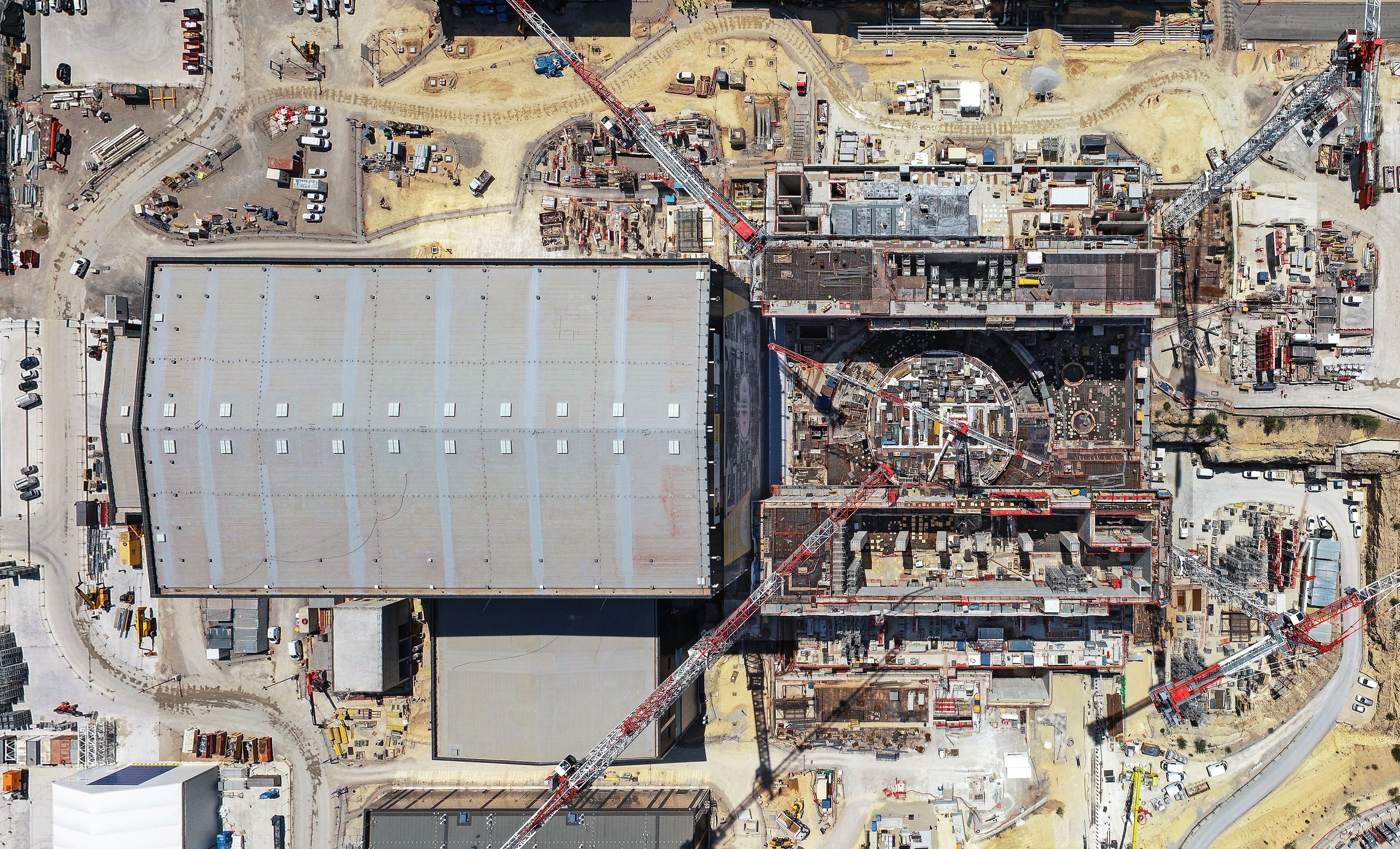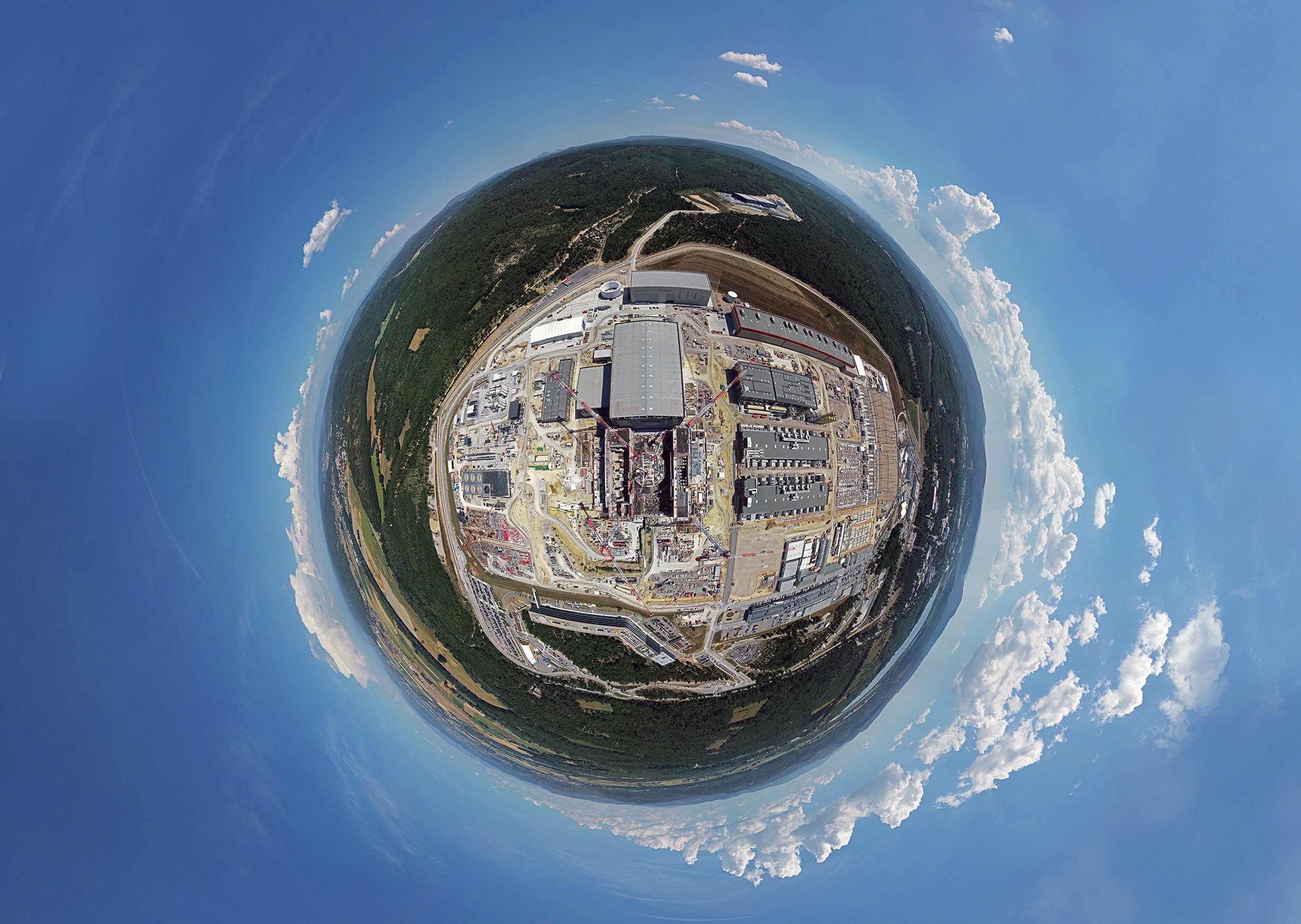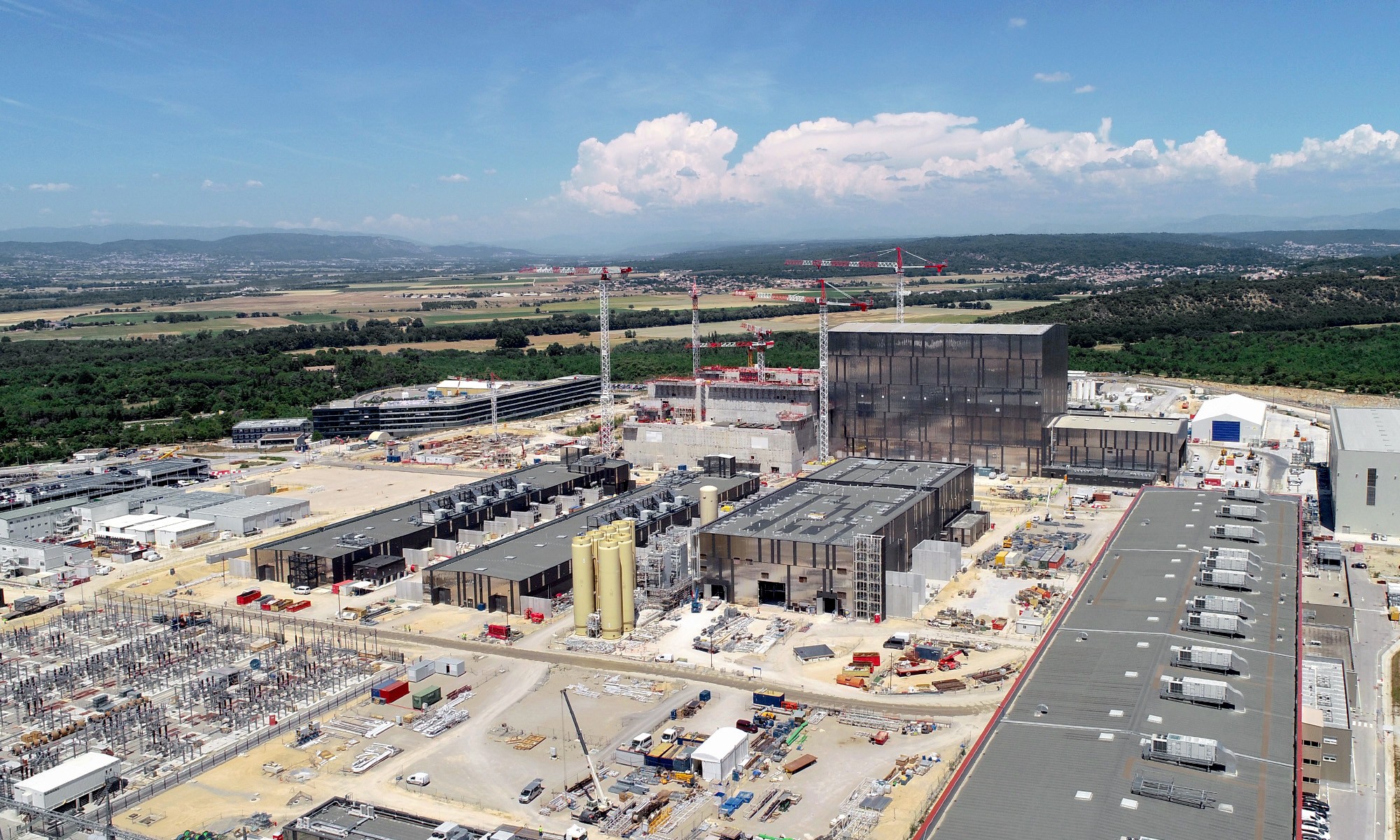The stage is now set for the next act
Nine years and 382 Newsline issues ago, a lone power shovel began removing the top soil from the area on the ITER platform where the Tokamak Complex now stands. Following two years of clearing and levelling work by France, construction of the ITER installation was beginning in earnest.
It may be hard to believe, but this is what the 42-hectare ITER platform looked like in the early months of 2010, just before being transferred from Agence Iter France to the European Domestic Agency, responsible for construction. A vast, featureless, moon-like expanse that—being located in Provence—some described as the largest pétanque court ever created.
As conveyed by the images from this latest drone survey (June 2019), the stage is now set for the next act in the project's history: the machine assembly phase, set to begin in May 2020.

